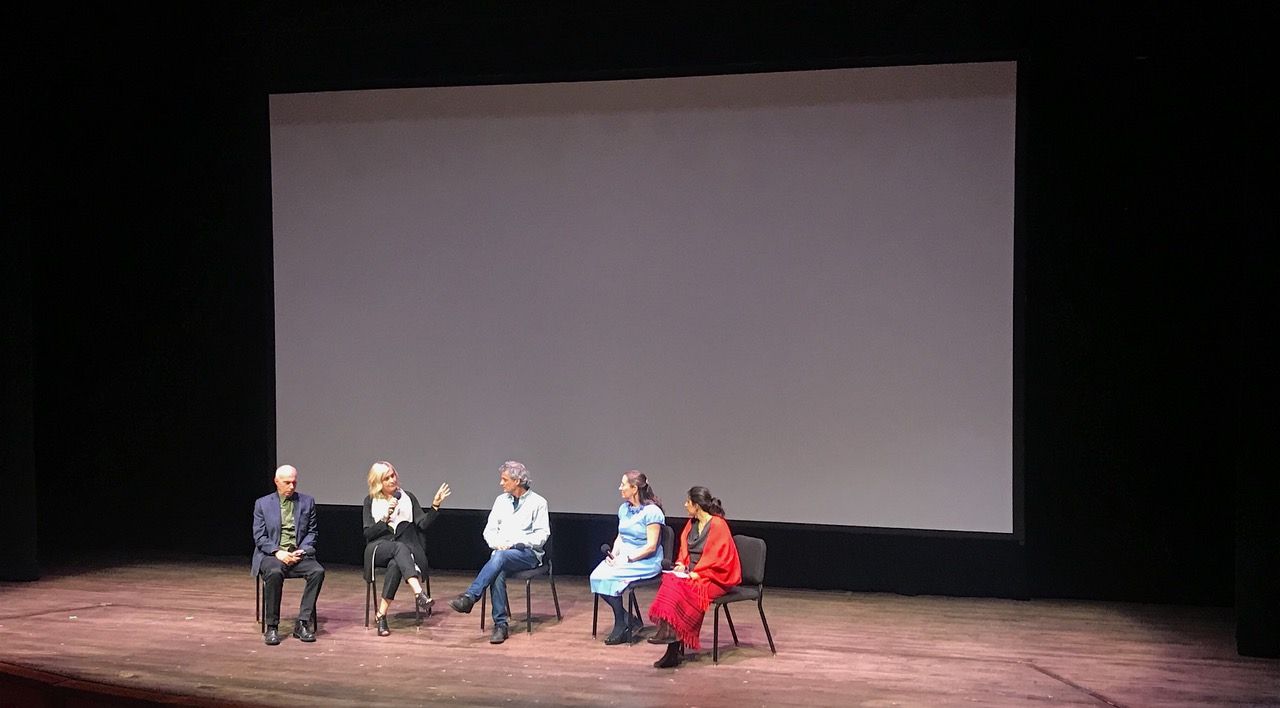Languages die out faster than endangered species do on this planet. While significant attention and financial efforts have been devoted to protecting physical life, language is rarely mentioned.
Language is life, though, according to photographer Lena Herzog. Her audiovisual installation, Last Whispers: Oratorio for Vanishing Voices, Collapsing Universes and a Falling Tree, set out to prove that point by drawing much-needed attention to the massive extinction of languages.
The Mother Tongue Film Festival — a collaboration between the Smithsonian, the Kennedy Center and the United Nations to celebrate the diversity in language and culture through film — held its finale Sunday. The free four-day event included six feature films as well as 15 shorts. Last Whispers, a culmination of about 20 years of Herzog’s research and creative efforts, marked the event’s end.
Events at the Kennedy Center naturally attract substantial audiences, and viewers formed a line that looped around the entire top floor of the Kennedy Center to wait to enter the Terrace Theater. The screening was held in the classical-looking venue, which had many audience members excited to see how truly immersive the showing would be.
Mark Mangini, one of the composers/sound designers who contributed to the project, described Last Whispers as “a sound sculpture.”
[Read more: Review: ‘Hamlet Replayed’ puts a twist on the classic tale]
The use of the Terrace’s powerful speakers filled the space with layers of language. At times, there’s only one speaker; at others, there is a chorus speaking in harmony. They range widely from eerie whispers to normal conversation, and even singing. Despite their incredibly different dialects, they blend easily. At times, it sounds as though different groups are speaking to each other to some moments, or fighting at others.
“I don’t want it to be a requiem,” Herzog said. She said she intended for it to become “a sort of lyrical poem.”
Herzog gave these underrepresented populations an opportunity to speak uninterrupted, and to be heard clearly.
Last Whispers centers on the power of voice. However, carefully selected images appear on a screen to guide the viewer through the installation’s experience. Everything appears in black and white to help maintain this focus, as bright flashes of white light are used instead to shock or intensify peak musical moments.
“Language is place,” Herzog said. The team coordinated the songs and speaking with images, which mainly included landscapes. Forests and jungles, rivers and rock formations give the viewer this sense of place. Other graphics of planets and supernovas, contributed by NASA, were used as well.
[Read more: Driskell Center’s “Posing Beauty” exhibit explores positive black representation]
The virtual reality portion of Last Whispers was a brief replay of the work. It allowed the audience to truly live where these languages are spoken. It answered one of the team’s many questions — “what is it like to step into that world?”
“What does diversity sound like?” was another point the team continued to focus on throughout production. They began their research for Last Whispers with nearly seven thousand possible languages. While only forty were included, they still attempted to be as all-encompassing as possible. The languages spanned the world, from India, to Papua New Guinea, Australia, and even the United States.
While the vast threat of language extinction is depressing, Herzog insists that the work is not meant to be negative. Not all of the communities included are stereotypically sad and decimated. Many are actually confident, independent and have some second language speakers who hope to pass their communication methods on.
It’s clear that the Lost Whispers team was, as Herzog suggested, “deeply guided by the voices.”



